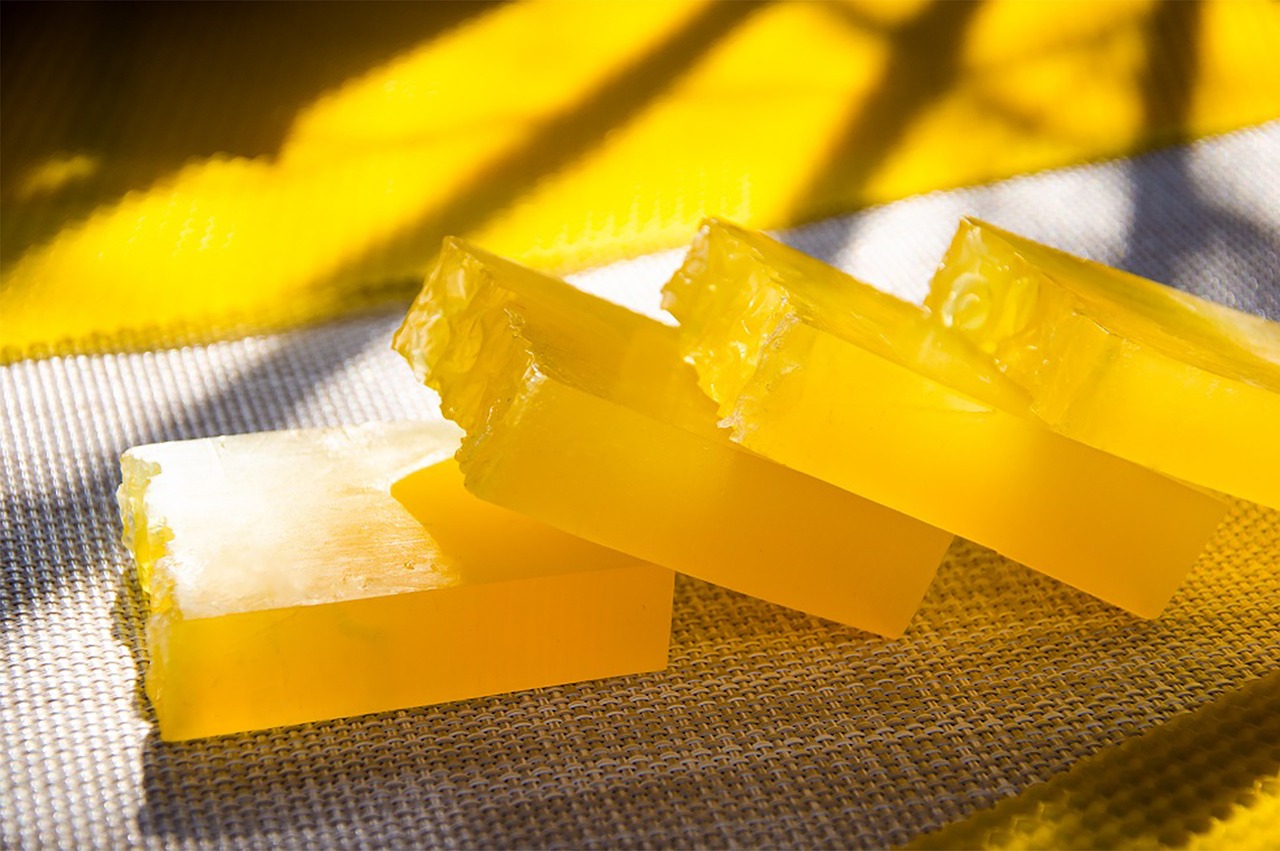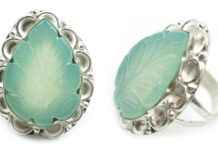This article delves into the distinct qualities of handmade jewelry, emphasizing its intrinsic value in comparison to mass-produced alternatives. By examining the craftsmanship, personal touch, and emotional significance behind each piece, we uncover the reasons why handmade jewelry stands out in a crowded marketplace.
The Art of Craftsmanship
Handmade jewelry is a testament to exceptional craftsmanship. Each piece is meticulously crafted by skilled artisans who dedicate their time and talent to create unique designs. This section explores various techniques and materials that elevate handmade items above their mass-produced counterparts. From intricate metalwork to the careful selection of gemstones, the artistry involved in creating handmade jewelry is unparalleled.
The Personal Touch in Handmade Jewelry
One of the most compelling aspects of handmade jewelry is the personal touch it embodies. Artisans infuse their individuality and creativity into each piece, making them truly unique. This section highlights how artisans often offer customization options, allowing buyers to collaborate on designs that reflect their personal style and preferences.
- Customization Options: Unlike mass-produced items, handmade jewelry often allows for personalization, ensuring that each piece is tailored to the recipient.
- Design Collaboration: Working closely with a jeweler enables clients to influence the design process, resulting in a piece that holds significant personal meaning.
- Use of Unique Materials: Artisans frequently utilize unconventional materials, enhancing the uniqueness and value of their creations.
Storytelling Through Jewelry
Every handmade piece carries a story, whether it reflects the artisan’s journey or the inspiration behind its design. This narrative aspect adds depth and significance, making handmade jewelry not just an accessory, but a meaningful artifact.
The Emotional Value of Handmade Jewelry
Handmade jewelry often holds deeper emotional significance compared to mass-produced items. These pieces can symbolize relationships, milestones, and cherished memories, making them invaluable to their owners. Thoughtful gifts crafted with care can leave a lasting impression, and many handmade pieces are designed to be treasured as heirlooms.
Environmental Impact of Handmade vs. Mass-Produced Jewelry
The environmental footprint of jewelry production is a growing concern. Handmade jewelry typically involves ethical sourcing of materials and smaller production runs, leading to less waste. Artisans prioritize sustainable practices, contributing positively to the environment.
Market Trends and Consumer Preferences
As awareness of the value of handmade products increases, market trends are shifting. Artisan markets and online platforms are becoming popular venues for selling handmade jewelry, connecting artisans with consumers seeking unique pieces. This growing demand reflects a broader appreciation for the artistry and personal connection that handmade jewelry offers.
In conclusion, the unique qualities of handmade jewelry—its craftsmanship, personal touch, emotional significance, and sustainable practices—make it more valuable than mass-produced alternatives. Investing in handmade pieces not only supports artisans but also allows individuals to own jewelry that is truly one-of-a-kind.

The Art of Craftsmanship
in handmade jewelry is a reflection of the artisan’s skill, creativity, and dedication. Unlike mass-produced items, which often prioritize efficiency and uniformity, handmade pieces are crafted with a level of detail and care that is truly exceptional. This section delves into the various techniques and materials that artisans employ, setting their creations apart from factory-made alternatives.
One of the key aspects that elevate handmade jewelry is the meticulous craftsmanship involved in its creation. Artisans often utilize traditional methods, such as lost-wax casting, hand-hammering, and stone setting, to create pieces that are not only visually stunning but also structurally sound. These techniques require years of practice and a deep understanding of the materials, resulting in jewelry that is as durable as it is beautiful.
Materials play a crucial role in distinguishing handmade jewelry from mass-produced items. Artisans frequently choose unique, high-quality materials, such as ethically sourced gemstones, recycled metals, and organic materials that may not be readily available in bulk production. This conscious selection process not only enhances the aesthetic appeal of the jewelry but also contributes to its environmental sustainability.
Furthermore, the personal touch in handmade jewelry cannot be overstated. Each piece tells a story, reflecting the artisan’s vision and inspiration. Whether it’s a custom design or a piece inspired by nature, the individuality infused into each item creates a deeper connection between the wearer and the jewelry.
In conclusion, the art of craftsmanship in handmade jewelry is characterized by exceptional skill, unique materials, and a personal touch that mass-produced items simply cannot replicate. This dedication to quality and individuality not only enhances the aesthetic value of the jewelry but also fosters a deeper emotional connection, making each piece truly one-of-a-kind.
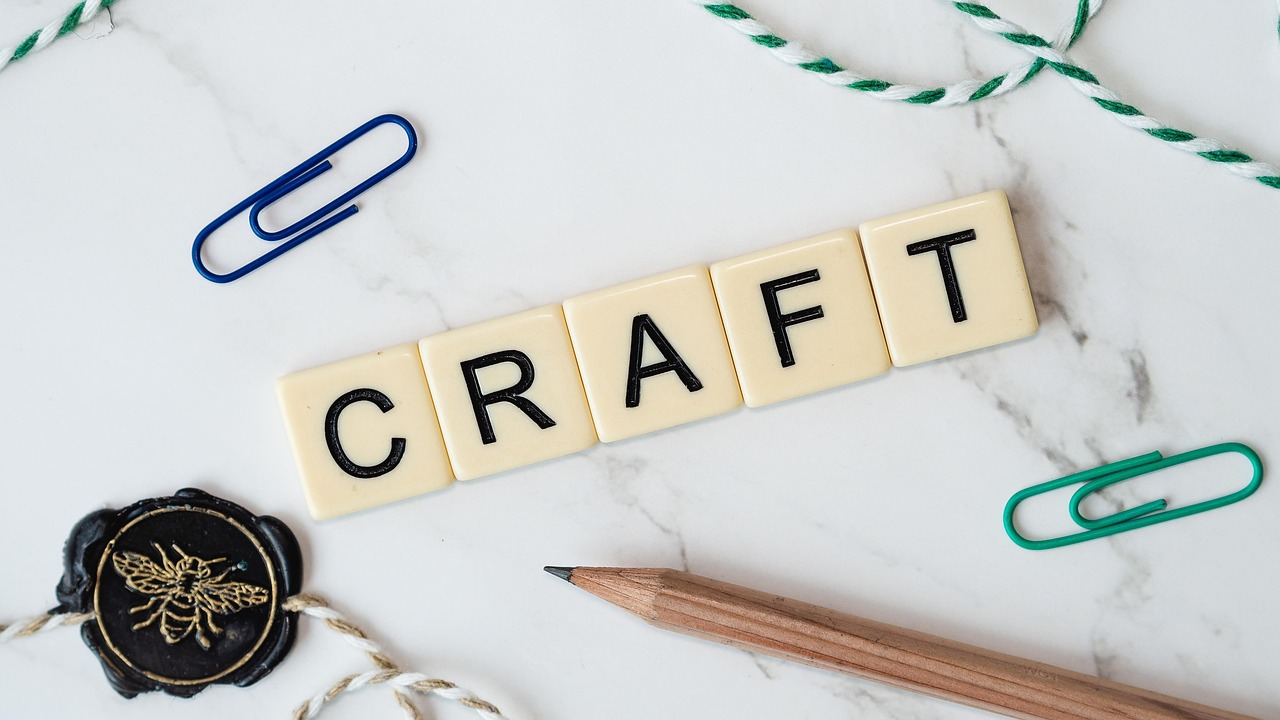
The Personal Touch in Handmade Jewelry
One of the most captivating features of handmade jewelry is the personal touch it inherently possesses. Unlike mass-produced items, each piece crafted by artisans showcases a unique blend of individuality and creativity. This section delves into the ways artisans infuse their personal stories, techniques, and inspirations into their creations, resulting in jewelry that is not just an accessory, but a reflection of the artisan’s essence.
Artisans often draw from their own experiences and cultural backgrounds, which significantly shapes the designs they create. For example, a jewelry maker inspired by nature may incorporate organic shapes and earthy tones, while another influenced by traditional patterns might use intricate designs that tell a story. This diversity in inspiration ensures that every piece is imbued with meaning, making it truly one-of-a-kind.
- Emotional Connection: Each handmade piece often carries an emotional weight, whether it’s a memory tied to a specific event or a tribute to a loved one. This emotional resonance enhances the value of the jewelry.
- Artisan Techniques: The techniques employed by artisans can vary greatly, from ancient methods passed down through generations to modern innovations. This mastery of technique adds depth and character to each piece.
- Customization: Many artisans offer customization options, allowing customers to collaborate on designs. This interaction not only personalizes the piece but also fosters a deeper connection between the buyer and the maker.
In conclusion, the personal touch in handmade jewelry is what sets it apart from mass-produced alternatives. The combination of unique design, emotional significance, and artisan craftsmanship creates pieces that are not merely worn but cherished. As consumers increasingly seek authenticity and individuality in their accessories, the allure of handmade jewelry continues to grow.
Customization Options
in handmade jewelry represent a significant advantage over mass-produced items. This unique feature allows buyers to engage directly with artisans, creating pieces that are not only visually appealing but also deeply personal. The process of customization can transform a simple piece of jewelry into a treasured heirloom, reflecting the wearer’s individual style and story.
When collaborating with artisans, clients often have the opportunity to influence various aspects of the design. This design collaboration fosters a sense of ownership and connection to the final product. Artisans typically welcome input on elements such as materials, colors, and overall design, ensuring that the piece resonates with the buyer’s preferences. This partnership not only enhances the uniqueness of the jewelry but also allows for the creation of items that hold personal significance.
Moreover, the use of unique materials is another hallmark of handmade jewelry. Artisans frequently source unconventional gemstones, metals, and other materials that are not available in mass-produced collections. This choice not only contributes to the distinctive quality of each piece but also allows for greater creativity and expression. Buyers can request specific materials that may hold sentimental value or align with their aesthetic preferences, further personalizing their jewelry.
In addition to aesthetics, the customization process can also incorporate meaningful symbols or engravings. Many artisans offer the option to add initials, dates, or special messages, turning a beautiful piece of jewelry into a cherished keepsake. This level of personalization is often unattainable with mass-produced items, where the focus is primarily on uniformity and efficiency.
In conclusion, the available in handmade jewelry not only enhance the aesthetic appeal but also deepen the emotional connection between the piece and its owner. By working closely with artisans, buyers can create unique, personalized items that reflect their individuality and commemorate significant moments in their lives.
Design Collaboration
Collaborating with a jeweler offers an extraordinary opportunity for clients to actively participate in the creation of their jewelry. This partnership not only enriches the design process but also ensures that the final piece resonates with personal meaning. By engaging in , clients can influence various aspects of the piece, from the choice of materials to the overall aesthetic, resulting in a unique creation that reflects their individual style and story.
One of the most significant benefits of such collaboration is the ability to create customized jewelry that cannot be found in mass-produced collections. Clients can share their visions and ideas with the jeweler, leading to a dialogue that fosters creativity and innovation. This interaction allows for the incorporation of personal elements, such as birthstones or symbols that hold special significance, making the piece truly one-of-a-kind.
Moreover, the process of collaborating with a jeweler can be a deeply fulfilling experience. As clients see their ideas come to life, they develop a connection to the piece that goes beyond its physical attributes. This emotional investment enhances the value of the jewelry, transforming it into a cherished memento that tells a story.
In addition, working closely with a jeweler can provide insights into the craftsmanship involved. Clients learn about different techniques, materials, and design principles, which enriches their appreciation for the art of jewelry making. This educational aspect of collaboration fosters a deeper understanding of the value of handmade pieces versus mass-produced alternatives.
Ultimately, the collaboration between clients and jewelers results in a piece that is not just an accessory but a symbol of personal significance. Whether it’s a gift for a loved one or a self-purchase, the resulting jewelry embodies a narrative that is both unique and meaningful, ensuring that it will be treasured for years to come.
Use of Unique Materials
The Use of Unique Materials in handmade jewelry is one of the most captivating aspects that sets it apart from mass-produced pieces. Artisans often explore a wide range of unconventional materials that are not typically found in commercial jewelry. This choice not only enhances the uniqueness of each piece but also significantly contributes to its overall value.
Unlike mass-produced jewelry, which often relies on common materials such as gold, silver, and diamonds, artisans frequently incorporate natural elements like wood, resin, and even recycled materials. These choices reflect a commitment to sustainability and creativity, allowing artisans to craft pieces that tell a story. For instance, a necklace made from reclaimed wood may carry the history of its previous life, adding a layer of depth that mass-produced items simply cannot offer.
Additionally, the use of rare gemstones and unique findings can elevate the aesthetic appeal of handmade jewelry. Artisans often source these materials from local suppliers or ethical mining practices, ensuring that each piece is not only beautiful but also responsibly made. This careful selection process contributes to a piece’s emotional significance, as buyers often feel a connection to the story behind the materials.
| Material Type | Example | Significance |
|---|---|---|
| Natural Elements | Wood | Represents sustainability and uniqueness |
| Recycled Materials | Glass | Promotes eco-friendliness and creativity |
| Rare Gemstones | Turquoise | Offers distinctive color and cultural significance |
In conclusion, the choice of materials in handmade jewelry not only enhances its aesthetic appeal but also adds layers of meaning and value. Each piece becomes a reflection of the artisan’s vision and the stories behind the materials used, making handmade jewelry a truly special choice for those seeking something unique and personal.
Storytelling Through Jewelry
is an integral part of the allure that handmade pieces hold. Each item is not just an accessory; it is a narrative that reflects the artisan’s journey, the cultural influences they draw from, and the personal stories that inspire their designs. Unlike mass-produced items, which often lack a personal touch, handmade jewelry invites wearers into a world of creativity and emotion.
When you choose a piece of handmade jewelry, you are embracing a story that is uniquely yours. For instance, an artisan might create a necklace inspired by their grandmother’s traditional designs, weaving in elements that represent family heritage. This connection to history makes the jewelry not just a fashion statement but a symbol of identity.
Moreover, the process of creating handmade jewelry is often collaborative, involving dialogues between the artisan and the buyer. This collaboration can lead to pieces that carry specific meanings, such as a custom ring designed to commemorate a significant life event. The resulting piece is not just jewelry but a cherished memory encapsulated in a tangible form.
Artisans often share their stories through the materials they select as well. For example, using ethically sourced stones or reclaimed metals not only enhances the beauty of the piece but also adds layers to its narrative, reflecting a commitment to sustainability and responsible craftsmanship. This choice of materials can resonate deeply with buyers, who appreciate the thoughtfulness behind each component.
In conclusion, the storytelling aspect of handmade jewelry is what sets it apart from mass-produced alternatives. Each piece embodies a rich tapestry of narratives, emotions, and connections, making it a truly valuable addition to any collection. When you wear handmade jewelry, you carry a story with you—one that is filled with meaning and significance.

The Emotional Value of Handmade Jewelry
goes beyond mere aesthetics; it encapsulates the essence of personal connections and cherished memories. Unlike mass-produced jewelry, which often lacks a story, handmade pieces are imbued with significance that resonates deeply with the wearer.
When we think about relationships, handmade jewelry often serves as a poignant reminder of special moments shared with loved ones. For instance, a necklace crafted to commemorate a wedding anniversary can symbolize the enduring bond between partners. Each time it is worn, it carries with it the emotions and memories of that special day, making it far more meaningful than a generic piece from a store.
Moreover, milestones in life, such as graduations, birthdays, or the birth of a child, can be celebrated with custom-made jewelry that reflects these significant events. A bracelet designed to mark a graduation can incorporate elements that represent the graduate’s journey, making it a unique keepsake that celebrates their achievements.
Handmade jewelry also enables the incorporation of personal memories. Artisans often work closely with clients to create pieces that reflect individual stories, such as a locket containing a photograph of a loved one or a charm bracelet that includes charms representing important life events. These items act as tangible reminders of experiences and emotions, serving as a source of comfort and nostalgia.
Furthermore, the act of giving handmade jewelry as a gift carries profound meaning. It shows thoughtfulness and effort, as each piece is tailored to the recipient’s taste and personality. This level of personalization transforms the gift into a treasured item that can be cherished for years to come.
In conclusion, the emotional value of handmade jewelry lies in its ability to symbolize relationships, celebrate milestones, and encapsulate personal memories. These unique pieces not only adorn the wearer but also serve as lasting reminders of the meaningful moments in their lives.
Gifts with Meaning
hold a special place in our hearts, serving as tokens of affection and appreciation. Among these, handmade jewelry stands out as a truly exceptional choice. Unlike mass-produced alternatives, handmade pieces can be tailored to reflect the unique personality and preferences of the recipient, making them not just gifts, but cherished memories.
When selecting a piece of handmade jewelry, the thoughtfulness of the gift is often evident. Each item is crafted with care, reflecting the artisan’s skill and passion. This personal touch transforms a simple piece of jewelry into a meaningful keepsake. For instance, a necklace designed with the recipient’s birthstone or a bracelet engraved with a significant date can carry profound emotional value.
Moreover, the act of giving handmade jewelry signifies a deeper connection between the giver and the recipient. It shows that the giver has taken the time to consider the recipient’s tastes and interests, making the gift more personal. This is particularly important for special occasions such as weddings, birthdays, or anniversaries, where the significance of the gift can enhance the emotional experience.
| Occasion | Jewelry Type | Personalization Ideas |
|---|---|---|
| Birthday | Customized Necklace | Birthstone, Initials |
| Wedding | Engraved Rings | Wedding Date, Names |
| Anniversary | Charm Bracelet | Significant Dates, Special Symbols |
In conclusion, handmade jewelry is not merely an accessory; it is an expression of love and thoughtfulness. By choosing a personalized piece, you create a lasting impression, ensuring that your gift will be treasured for years to come. The emotional significance behind handmade jewelry makes it a perfect choice for anyone looking to give a gift that truly resonates.
Heirloom Potential
Handmade jewelry is often seen as a treasure that transcends generations, embodying not just aesthetic beauty but also a rich history and emotional resonance. The unique qualities of these pieces enhance their potential as heirlooms, making them invaluable assets for families. This section delves into the factors that contribute to the heirloom status of handmade jewelry.
- Craftsmanship and Quality: Each handmade piece is a testament to the artisan’s skill and dedication. The meticulous attention to detail ensures that these items are not only visually stunning but also durable, capable of withstanding the test of time.
- Personal Stories: Handmade jewelry often carries a narrative that connects the wearer to their family history. Whether it’s a piece passed down from a grandmother or a custom design that commemorates a significant life event, these stories enhance the emotional value of the jewelry.
- Customization: The ability to customize handmade jewelry allows individuals to create pieces that reflect personal significance. This aspect makes each item unique, as it can symbolize relationships, milestones, or cherished memories, further solidifying its status as an heirloom.
- Unique Materials: Artisans frequently use materials that are not commonly found in mass-produced jewelry. The choice of unique gemstones or ethically sourced metals adds to the distinctiveness and value of handmade pieces, making them worthy of being cherished.
- Timeless Designs: Many handmade jewelry pieces feature classic designs that remain stylish across generations. This timeless quality ensures that the jewelry can be worn and appreciated by different family members over the years.
In conclusion, the heirloom potential of handmade jewelry is rooted in its exceptional craftsmanship, personal stories, and unique characteristics. These elements not only enhance the aesthetic appeal but also create a deep emotional connection, making them cherished pieces that can be passed down through generations.
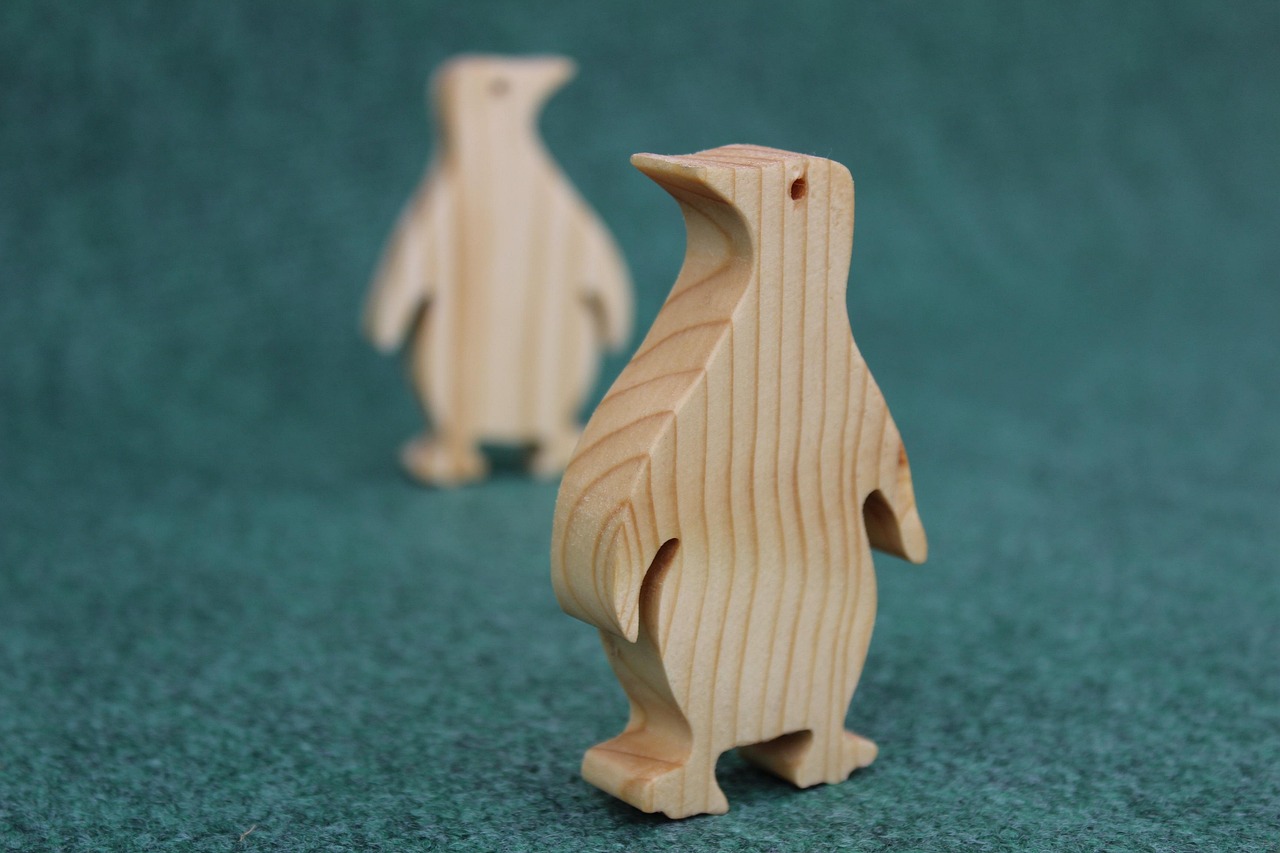
Environmental Impact of Handmade vs. Mass-Produced Jewelry
The environmental footprint of jewelry production is becoming an increasingly critical issue as consumers grow more conscious of their purchasing decisions. This section delves into the sustainability of handmade jewelry compared to mass-produced alternatives, shedding light on various eco-friendly practices that artisans employ.
Handmade jewelry often stands out due to its ethical sourcing of materials. Artisans typically prioritize using responsibly sourced components, ensuring minimal environmental harm. This contrasts sharply with mass-produced jewelry, where materials may be obtained through unsustainable practices that exploit natural resources.
| Aspect | Handmade Jewelry | Mass-Produced Jewelry |
|---|---|---|
| Material Sourcing | Ethically sourced, sustainable | Often unsustainable, harmful practices |
| Production Scale | Small, limited runs | Large-scale manufacturing |
| Waste Generation | Minimal waste | High waste due to overproduction |
Furthermore, handmade jewelry production typically involves smaller production runs, which significantly reduces waste. Artisans often create pieces to order, minimizing excess inventory that usually leads to discarded items in mass production. This conscious approach not only lessens the environmental impact but also fosters a connection between the artisan and the consumer.
Another crucial factor is the use of unique materials. Artisans frequently incorporate recycled or upcycled materials into their designs, which not only adds character but also helps in reducing the demand for new resources. In contrast, mass-produced jewelry often relies on newly mined materials, contributing to environmental degradation.
In conclusion, the choice between handmade and mass-produced jewelry extends beyond aesthetics; it encompasses significant environmental considerations. By opting for handmade pieces, consumers can support sustainable practices, reduce waste, and promote ethical sourcing, ultimately making a positive impact on the planet.
Ethical Sourcing of Materials
is a fundamental principle that many artisans embrace in the jewelry industry. This commitment not only reflects their dedication to quality but also their responsibility towards the environment and society. In an age where consumers are increasingly aware of the impact of their purchases, the importance of ethical sourcing cannot be overstated.
Artisans prioritize obtaining materials from sources that adhere to sustainable practices. This means that they seek out suppliers who ensure that the extraction of metals, gemstones, and other materials does not contribute to environmental degradation or exploitative labor practices. By doing so, artisans are not only crafting beautiful pieces but also supporting fair trade and ethical labor practices.
- Environmental Responsibility: Many artisans use recycled materials or ethically mined gemstones, which significantly reduce the environmental impact compared to traditional mining methods.
- Community Support: By sourcing materials from local or fair-trade suppliers, artisans contribute to the economic development of communities, ensuring that local economies thrive.
- Transparency: Artisans often provide transparency about their sourcing practices, allowing consumers to make informed decisions about their purchases.
The jewelry industry has faced criticism for its environmental and ethical implications. However, the movement towards ethical sourcing represents a shift in consumer preferences. Buyers are increasingly looking for pieces that not only resonate with their personal style but also align with their values.
In conclusion, the importance of ethical sourcing in the jewelry industry is paramount. It fosters a sense of trust between artisans and consumers, ensuring that each piece carries not just aesthetic value but also a commitment to ethical practices. As awareness grows, it is clear that the future of jewelry lies in the hands of those who prioritize responsibility alongside creativity.
Reducing Waste in Production
In an era where sustainability is increasingly critical, handmade jewelry stands out as a beacon of eco-friendliness. Unlike mass-produced items, which often lead to significant waste due to overproduction and excess inventory, handmade jewelry is crafted in smaller production runs. This approach not only minimizes waste but also ensures that each piece is made with intention and care.
Artisans typically create jewelry in limited quantities, which allows them to use their materials more efficiently. For instance, leftover materials from one project can often be repurposed into another piece, reducing the overall waste generated during the creation process. Furthermore, the meticulous nature of handmade production means that artisans are less likely to discard imperfect items; instead, they often find innovative ways to incorporate these pieces into new designs.
Additionally, many artisans are committed to using sustainable materials, such as recycled metals and ethically sourced gemstones. This practice not only minimizes the environmental impact associated with mining and processing new materials but also supports a circular economy. By choosing to work with these sustainable options, artisans contribute to the preservation of natural resources and the reduction of environmental degradation.
Moreover, the connection between artisans and their materials fosters a deeper appreciation for the resources involved in jewelry making. Artisans often share the stories behind their materials, educating consumers about the importance of sustainability and responsible sourcing. This transparency not only enhances the value of the pieces but also encourages consumers to make more informed purchasing decisions.
In conclusion, the reduction of waste in the production of handmade jewelry is a testament to the commitment of artisans to sustainable practices. By prioritizing smaller production runs and utilizing eco-friendly materials, they not only create beautiful pieces but also contribute positively to the environment. As consumers become more aware of these practices, the demand for handmade jewelry is likely to continue growing, promoting a more sustainable future for the industry.
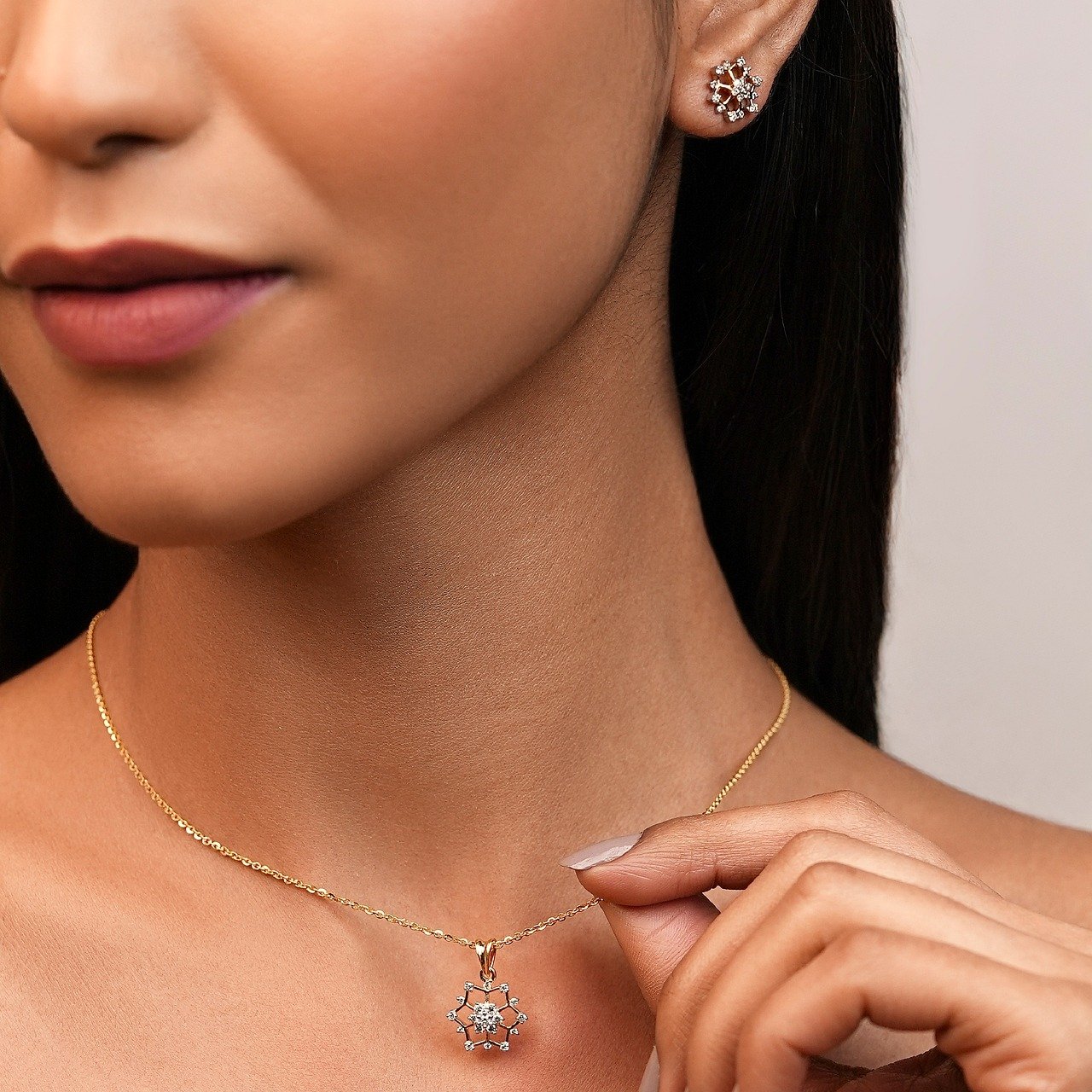
Market Trends and Consumer Preferences
In recent years, there has been a remarkable shift in consumer behavior, particularly regarding the appreciation of handmade jewelry. As more individuals become aware of the significance and value of artisanal products, the demand for unique and personalized jewelry pieces has surged. This article delves into the factors driving this trend and its implications for the jewelry industry.
Growing Awareness of Handmade Value
Consumers today are increasingly seeking products that tell a story and reflect their personal style. Handmade jewelry offers a distinct advantage in this regard, as each piece is often crafted with care and creativity, showcasing the artisan’s skills. The growing awareness of the environmental and social impacts of mass production has also contributed to this shift, prompting consumers to favor sustainable and ethically made products.
Shift Towards Artisan Markets
The rise of artisan markets has played a crucial role in connecting consumers with handmade jewelry. These markets not only provide a platform for artisans to showcase their work but also create an engaging shopping experience for consumers. Shoppers are drawn to the opportunity to meet the creators, learn about their techniques, and appreciate the craftsmanship behind each piece.
Online Platforms Revolutionizing Access
The digital age has transformed the way handmade jewelry is marketed and sold. E-commerce platforms have made it easier for artisans to reach a wider audience, allowing consumers from various regions to access unique pieces that may not be available locally. This accessibility has fueled the demand for handmade items, as buyers are now more informed and can easily compare products.
Customization and Personalization
Another significant trend is the increasing desire for customized jewelry. Consumers are looking for pieces that resonate with their personal stories or significant life events. Artisans who offer customization options can cater to this demand, creating a direct connection between the buyer and the piece. This personal touch not only enhances the value of the jewelry but also fosters customer loyalty.
Conclusion
The growing demand for handmade jewelry reflects a broader shift in consumer preferences towards authenticity, sustainability, and personalization. As more individuals recognize the value of unique, artisan-crafted pieces, the jewelry industry must adapt to these changing trends. Emphasizing craftsmanship, storytelling, and ethical practices will be essential for artisans looking to thrive in this evolving market.
The Rise of Artisan Markets
Artisan markets have emerged as vibrant venues for selling handmade jewelry, attracting both artisans and consumers alike. These markets serve as a bridge, connecting skilled craftsmen with individuals in search of unique and meaningful pieces. The rise of these markets highlights a growing appreciation for artisanal work and the stories behind each creation.
One of the key benefits of artisan markets is the direct interaction between artisans and customers. This personal connection allows consumers to learn about the craftsmanship and inspiration behind each piece, fostering a deeper appreciation for the work involved. Artisans often share their creative processes, which can include everything from selecting materials to the techniques used in crafting their jewelry. This transparency not only enhances the value of the pieces but also creates a sense of community among buyers and makers.
Furthermore, artisan markets provide a platform for artisans to showcase their creativity and individuality. Unlike mass-produced jewelry, which often lacks character, handmade pieces reflect the personal touch and unique style of the artisan. This aspect is particularly appealing to consumers who are looking for items that stand out and tell a story.
| Benefits of Artisan Markets | Description |
|---|---|
| Unique Offerings | Handmade jewelry that cannot be found in mainstream stores. |
| Direct Interaction | Opportunity to meet the artisans and learn about their work. |
| Support for Local Economy | Encourages local craftsmanship and small businesses. |
Moreover, the rise of artisan markets coincides with a growing consumer preference for sustainable and ethically made products. Many artisans prioritize eco-friendly practices, using recycled materials and minimizing waste in their production processes. This commitment to sustainability resonates with consumers who are increasingly conscious of their purchasing decisions.
In conclusion, artisan markets are not just places to buy handmade jewelry; they represent a movement towards valuing craftsmanship, sustainability, and personal connection. As these markets continue to grow in popularity, they will play a crucial role in shaping the future of the jewelry industry, encouraging a shift away from mass production and towards more meaningful consumer choices.
Online Platforms for Handmade Jewelry
E-commerce has significantly revolutionized the landscape of the jewelry market, particularly for handmade creations. With the advent of online platforms, artisans can now reach a global audience, breaking geographical barriers that previously limited their customer base. This section delves into the critical role that these platforms play in promoting unique artisan jewelry, allowing for greater visibility and accessibility.
Wider Audience Reach
Online platforms enable artisans to showcase their work to a much larger audience than traditional brick-and-mortar stores. This increased exposure not only helps artisans sell their creations but also educates consumers about the value of handmade jewelry. As more people discover these unique pieces, the demand for artisan jewelry continues to rise.
Building a Brand
Through e-commerce, artisans can establish their brands and share their stories. Many platforms allow sellers to create personalized profiles, showcasing their creative processes, inspirations, and the materials they use. This storytelling aspect fosters a deeper connection between the artisan and the consumer, enhancing the perceived value of the jewelry.
Customization and Personalization
One of the significant advantages of online platforms is the ability to offer customization options. Artisans can collaborate with customers to create bespoke pieces that reflect individual tastes and preferences. This level of personalization is often absent in mass-produced jewelry, making handmade options more appealing.
Social Media Integration
Social media plays a pivotal role in promoting handmade jewelry. Platforms like Instagram and Pinterest allow artisans to showcase their work visually, engage with potential customers, and build a community around their brand. These interactions not only drive sales but also create a loyal customer base that appreciates the artistry behind each piece.
Conclusion
In conclusion, online platforms have become essential for the promotion and sale of handmade jewelry. By providing artisans with the tools to reach broader audiences, share their stories, and offer personalized options, e-commerce has transformed the way these beautiful creations are marketed and appreciated. As consumers increasingly seek unique and meaningful pieces, the role of online platforms will only continue to grow.
Frequently Asked Questions
- What makes handmade jewelry more valuable than mass-produced pieces?
Handmade jewelry is often crafted with exceptional skill and attention to detail, showcasing the artisan’s dedication. Each piece tells a unique story and carries an emotional significance that mass-produced items simply can’t match.
- Can I customize handmade jewelry?
Absolutely! One of the greatest advantages of handmade jewelry is the ability to customize. You can collaborate with the artisan to create a piece that reflects your personal style and preferences, making it truly one-of-a-kind.
- Are handmade jewelry pieces sustainable?
Yes, many artisans prioritize sustainability by using ethically sourced materials and reducing waste in their production processes. This makes handmade jewelry a more eco-friendly choice compared to mass-produced options.
- What are the benefits of gifting handmade jewelry?
Gifting handmade jewelry is special because it can be tailored to the recipient’s taste. It often symbolizes meaningful relationships and milestones, making it a thoughtful and cherished gift.
- How can I find handmade jewelry?
You can discover handmade jewelry at artisan markets, local boutiques, and online platforms dedicated to promoting artisan creations. These venues connect you with unique pieces that reflect the creativity of skilled artisans.

